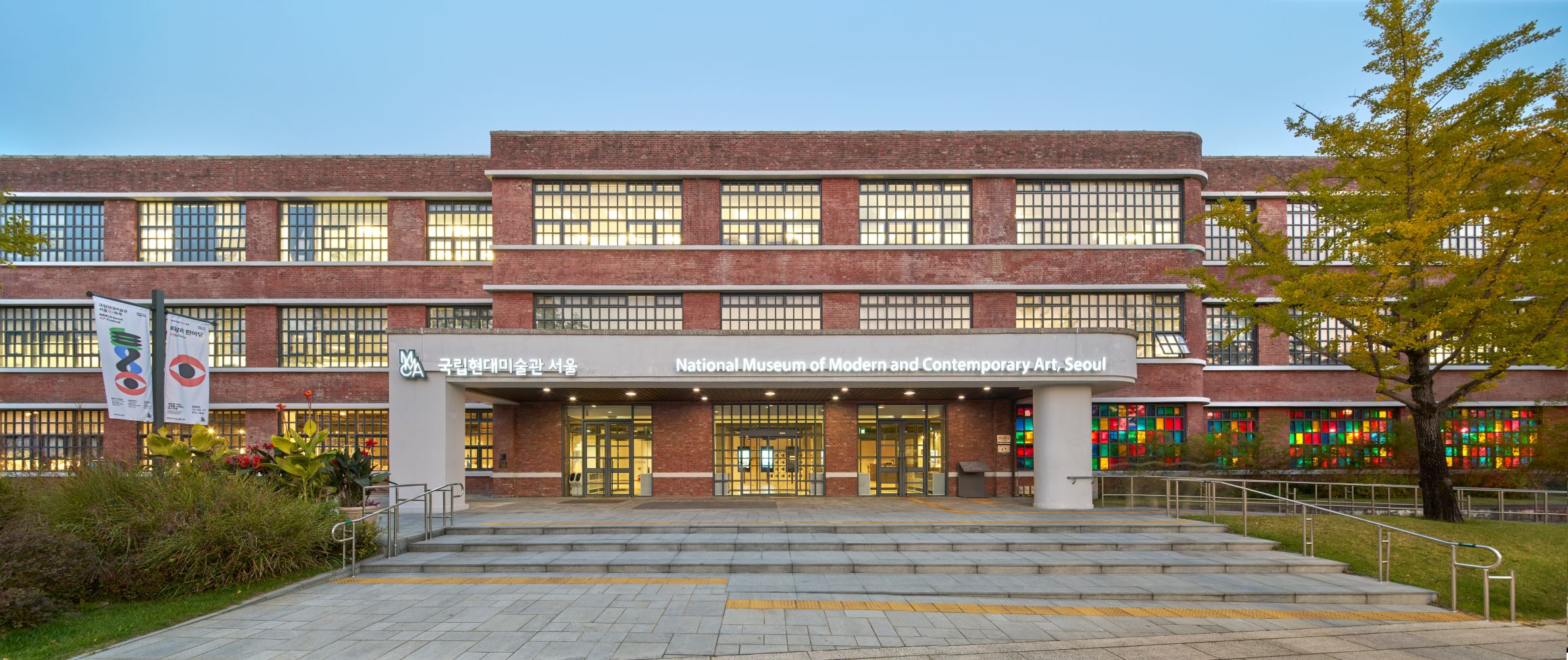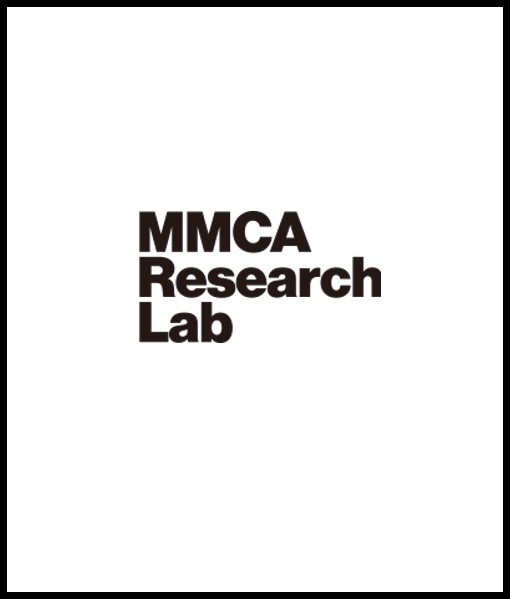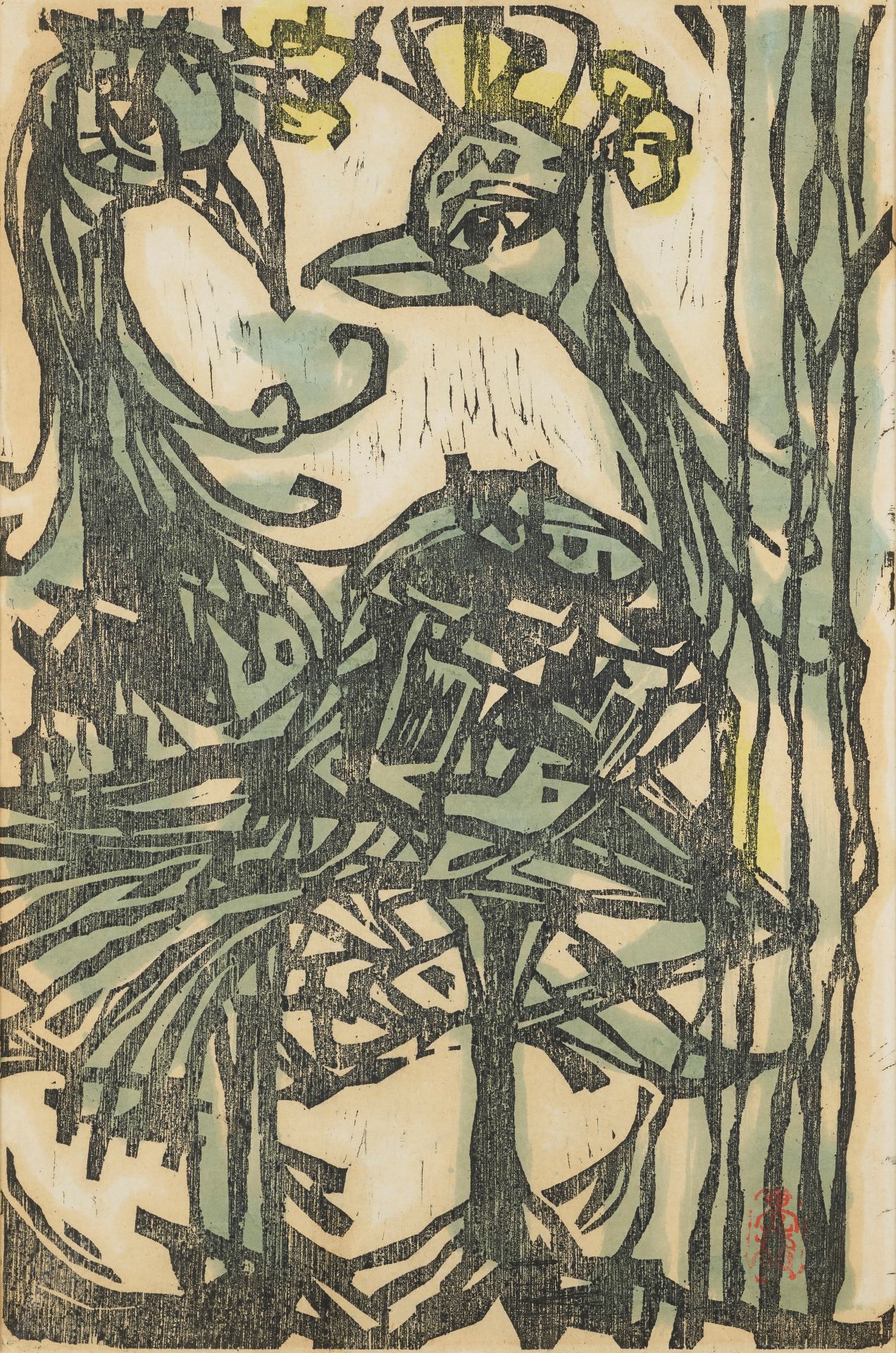
The Forty Years of Korean Contemporary Printmaking, Poster, 1993, MMCA Art Research Center Collection
The Forty Years of Korean Contemporary Printmaking
* Source: MMCA
Related
-

National Museum of Modern and Contemporary Art, Korea (MMCA)
A national museum established in 1969 that researches, collects, and exhibits modern and contemporary art. As of 2018, there are branches in Gwacheon, Deoksugung, Seoul, and Cheongju. When first established, the National Museum of Modern Art (now MMCA) was located within Gyeongbokgung palace. In 1973, the museum moved to the East Wing of the Deoksugung Seokjojeon building. Then, in 1986, the museum moved to its current location in Gwacheon, to occupy a new building equipped with an outdoor sculpture exhibition space, and has since opened a new chapter in Korean art. The perceived need for a space to focus specifically on Korean contemporary art led to the establishment of further site, the National Museum of Contemporary Art, Deoksugung in 1998. In November 2013, a further demand for contemporary art exhibitions led to the establishment of another Seoul branch being created in the Defense Security Command building in Sogyeok-dong, Jongno-gu, which has since its inception engaged in multifaceted exhibitions of both domestic and overseas contemporary art. Also, as a further component of the MMCA complex, a disused tobacco factory in Cheongju was remodeled to provide a home to the National Art Storage Center.
-

Lee Gu-yeol
Lee Gu-yeol(1932-2020) was the first art journalist, an art critic, and a researcher of modern art in Korea. Born in Yeonbaek, Hwanghae-do Province, Lee went to South Korea during the Korean War. He enlisted in the army as a cadet, completed infantry and artillery schools, and served as an officer during the war. After being discharged as a captain in 1958, he joined World Telecommunications and worked in the publications department. In 1959, he enrolled as a junior in the College of Fine Arts at Hongik University, but he could not finish his studies. He worked as an art reporter in the culture desk of Segye Ilbo newspaper (renamed the Minguk Ilbo in 1960) and then as a reporter and deputy head of the culture desk of Kyunghyang Shinmun newspaper in and after 1962. In 1970, he transferred to Seoul Sinmun newspaper and served as the head of its culture desk. He became the head of the culture desk of Daehan Ilbo newspaper in 1972 but ended his journalistic career when the company ceased to publish in 1975. In 1964, Lee was in charge of editing the quarterly magazine Misul (Art) (published by Munhwa Gyoyuk Chulpansa). He also organized the publication of fifteen volumes of the Complete Collection of Korean Art (sponsored by Donghwa Chulpan Gongsa) and worked as chief editor from 1973 through 1975. He served as president of the Korean Art Critics Association (1984–1985), a member of the Cultural Heritage Committee of the Ministry of Culture and Tourism (1992–1999), and as director of exhibition projects at the Seoul Arts Center (1993–1996). He also opened the Korean Modern Art Research Institute and published its irregular periodical Modern Art of Korea from the first to fifth issues (1975–1977). His books include The Realm of Painting: The Life and Art of Idang (1968), A Study on Modern Korean Art (1972), The Development of Modern Korean Art (1982), Research on Modern Korean Art History (1992), History of Modern Korean Painting (1993), 50 Years of North Korean Art (2001), The Story behind Modern Korean Art (2005), Rha Hyeseok: The Woman Who Drew Her Fiery Life (2011), Korean Cultural Heritage: A History of Suffering (2013), and My Days as an Art Reporter (2014). In 2018, he published two volumes of his self-edited literary collection Miscellany by Cheongyeo to celebrate his turning eighty-eight. Lee Gyu-yeol played a crucial role in the establishment of the Archives of Korean Art Journal, the first art archives in Korea, in December 1998 by donating his materials related to modern and contemporary art to the Samsung Museum of Art. In 2015, he donated more than 4,000 items to Gacheon Museum of the Gil Cultural Foundation. He passed away in 2020 at the age of eighty-nine.
-

Contemporary Printing Arts Exhibition for Decade
Contemporary Printing Arts Exhibition for Decade was an exhibition held by the Korea Prints Association [Hanguk panhwa hyeophoe] from August 5 through 30, 1969 at Sinseong Coffee Shop (on the fourth floor of the National Assembly Hall) and Changil Coffee Shop (behind the UNESCO Center on 2-ga Myeong-dong). The Korea Prints Association was founded in 1958 with the goal of revitalizing the printmaking industry and popularizing the concept of prints. Moreover, it requested the establishment of a prints section at the National Art Exhibition (Gukjeon), held a competition to encourage interest in printmaking as an expressive medium of art, and fostered new talents. The founding of such an organization representing Korean print circles signaled the beginning of contemporary prints in Korea. The Contemporary Printing Arts Exhibition for Decade featured Buddha’s Spirit (1958) by Lee Hangsung, president of the Korea Prints Association, Work (1958) by Kim Youngjoo, Animal (1959) by Bae Yoong, Buddha (1960) by Park Sungsam, Transportation (1967) by Kim Sangyu, and Lotus Pond (1968) by Choi Youngrim. The exhibition also presented works by Kang Whansup, Kim Choungza, Kim Chonghak, Yoo Kangyul, Youn Myeungro, Rhee Sangwooc, Chung Kyu, Choi Dukhyu, Moon Woosik, and Chun Sangbum. This exhibition, which introduced these artists’ early and recent works, allowed viewers to understand changes in the decade since the establishment of the Korea Prints Association.
Find More
-

Kang Kukjin
Kang Kukjin (1939-1992) was a leading artist in experimental art that emerged in Korean art scene from the late 1960s through the 1970s. In 1965, he graduated from the College of Fine Arts at Hongik University. In 1964, Kang Kukjin founded the Non Col, advocating a break with the established generation. He joined the Sinjeong Group in 1967 and worked in experimental art with objets, installations, and happenings. Participating in the Union Exhibition of Korean Young Artists held in 1967 along with Chung Chanseung, Jung Kangja, and others, Kang staged Happening with Vinyl Umbrella and Candle, the first performance art in Korea. In the following year, he performed Transparent Balloon and Nude and Murder at the Han Riverside. Later, Kang expanded the scope of his contemporary art by devoting himself to three-dimensional works and installations. He also led the popularization of printmaking by opening the first printmaking workshop in 1971. In the mid-1970s, he resumed painting. From then on, he produced the Rhythm series (1985) that explored Korean sentiments through repeated line drawings and the Light of History series (1989) that sought the original form of Korean beauty in historical artifacts like ancient clay figurines and Buddhist images. In 2019, the Kang Kukjin Print Award was established by the Kang Kukjin Foundation and Korean Contemporary Printmakers Association [Hanguk hyeondae panhwaga hyeophoe].
-

Yoo Kangyul
Yoo Kangyul(1920-1976) was a Korean printmaker and dye craftsman who engaged in diverse activities from the late 1940s through the early 1960s. He entered the Azabu Middle School in Tokyo in 1933 and graduated from the Craft and Design Department at Nihon Art School in 1944. In 1941, while studying in Japan, Yoo’s work was selected for the Japanese Craftspeople Association Exhibition. He received apprenticeship education on dyeing at the Saito Craft Institute. After returning to Korea, Yoo worked as a principal lecturer and researcher at Lacquerware Inlaid with Mother-of-Pearl Training Center and Korean Plastic Arts and Culture Research Institute. In 1958, he received Rockefeller Foundation scholarship to study printmaking at New York University and the Pratt-Contemporaries Graphic Art Centre. He was later appointed as a professor at Hongik University and served until 1976. He was also active as an architectural advisor and interior designer. Among his notable works are the exhibition design for Anti-Communist Exhibition Hall of the Freedom Center (1966) and the Ceramic Mural for the National Assembly (1974). Yoo Kangyul founded the Korean Contemporary Printmaker Association [Hanguk hyeondae panhwaga hyeophoe] in 1968 to develop Korean printmaking. Moreover, he served as a judge of the Korean Art Grand Award Exhibition in 1969, a standing committee member for the construction of the National Museum of Korea in 1970, and a head judge for the National Tourist Folk Art Competition from 1971 to 1976. He won many awards including the Minister of Education Award (1953) and the Prime Minister Award (1954) at the National Art Exhibition (Gukjeon) and a presidential prize for the interior design of the National Museum of Korea (1970). Yoo did not hold a solo exhibition during his lifetime, but in 1978 Kyang Yul Yoo’s Exhibition was organized by his students and the National Museum of Modern Art, Korea (now MMCA). In 1981, Collection of Works by Yoo Kangyul was published. In 2000, his bereaved family donated Yoo’s collection to the MMCA and the National Museum of Korea.






